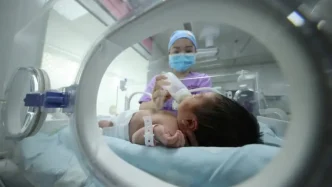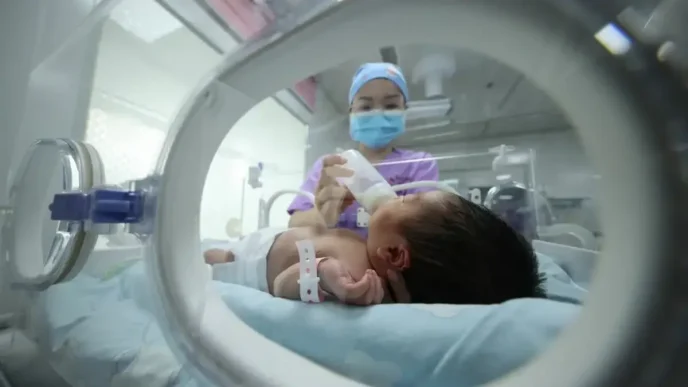The Philippines is grappling with a severe shortage of registered pharmacists, a crisis that underscores broader challenges within the country’s public healthcare system. According to the Private Sector Advisory Council (PSAC), an organisation formed to bolster the government’s economic initiatives, the nation faces a deficit of 27,500 pharmacists, with only 30,000 currently registered against a demand for 57,500. This gap, compounded by uneven distribution and systemic barriers, has left rural and remote communities struggling to access essential medicines, while urban centres absorb the majority of available professionals.
The stakes are high. Without immediate and innovative interventions, the shortage threatens to deepen health inequities across the archipelago. With the country producing just 4,000 board-certified pharmacists annually, and many opting for careers outside the pharmaceutical sector, PSAC estimates it could take at least seven years to close the gap—assuming demand remains static. In reality, as the population grows and healthcare needs evolve, the timeline could stretch even further.
A Stark Disparity in Access
Under Republic Act No. 5921, known as the Pharmacy Law, every drugstore or pharmacy in the Philippines must have at least one pharmacist per shift. Yet, with the current shortfall, this legal requirement is a daunting, often unattainable, standard. The uneven distribution of pharmacists exacerbates the problem: most professionals gravitate towards urban centres, larger hospitals, and well-resourced drugstores, leaving rural patients to travel long distances for critical medications.
The World Health Organization recommends a ratio of one pharmacist per 2,000 people for adequate healthcare coverage. In the Philippines, however, the ratio languishes at 0.57 per 2,000—comparable to Indonesia and Vietnam but trailing behind Thailand, which achieves 0.8 per 2,000, according to PSAC data. For Filipinos in remote areas, this statistic translates into a tangible barrier to care, where the absence of a nearby pharmacist can mean delayed treatment or none at all.
Roots of the Crisis
The shortage of pharmacists is not a new issue, nor is it an isolated one. As early as 2014, the Drugstores Association of the Philippines highlighted a worrying decline in students pursuing pharmacy degrees, attributing it to a lack of appreciation for the profession. Ma. Gilda Saljay, then president of the Philippine Pharmacists Association, poignantly noted that pharmacists are often seen as mere salespersons rather than vital healthcare professionals. “People don’t realise we are health-care professionals behind that counter,” she said at the time.
This perception, coupled with limited financial incentives and career opportunities, has deterred many Filipinos from entering the field. The Department of Health reported in 2021 that the country was short of 14,000 pharmacists—a figure that has since ballooned—alongside deficits in other healthcare roles, including doctors, nurses, and radiologists. Senator Pia Cayetano captured the gravity of the situation in 2023, stating, “Everything that makes a health system sustainable, we have a shortage of.”
Beyond perception and numbers, structural issues play a significant role. Many licensed pharmacists choose paths in academia, private industry, or unrelated fields, further shrinking the pool available for community pharmacies. Meanwhile, the lure of higher-paying jobs overseas continues to drain local talent, a trend that intensified during and after the COVID-19 pandemic. Frontline healthcare workers, including pharmacists who risked their lives during the crisis, are still awaiting long-delayed allowances, a delay that only fuels disillusionment with the domestic system.
Innovative Proposals Amidst Urgency
Recognising that traditional approaches to training and recruitment will take years to yield results, PSAC’s health cluster, led by AC Health CEO Paolo Borromeo, has put forward bold solutions. One key proposal is to allow licensed pharmacists to oversee multiple pharmacies remotely, a concept that could rapidly expand access to community pharmacies, particularly in underserved regions. This regulatory shift, often described as a “sandbox” approach, would enable pharmacists to multiply their impact without compromising oversight.
Additionally, PSAC advocates for the wider adoption of telepharmacy services—a digital platform that connects pharmacists with patients and pharmacy assistants remotely. By enhancing the role of pharmacy assistants, who could handle routine tasks under supervision, telepharmacy could bridge immediate gaps in service delivery. “We are working toward a more equitable and sustainable health-care system,” Borromeo stated during a PSAC meeting on 6 March 2025.
These proposals are not without challenges. Remote oversight and telepharmacy require robust digital infrastructure, which remains uneven across the Philippines, particularly in rural areas. Moreover, regulatory bodies must balance innovation with patient safety, ensuring that remote supervision does not dilute the quality of care. If implemented effectively, however, these measures could serve as a stopgap while longer-term solutions take shape.
Long-Term Strategies for a Sustainable Future
Beyond immediate fixes, addressing the pharmacist shortage demands systemic reform. PSAC and other stakeholders have urged the government to consider financial assistance for students pursuing healthcare degrees, particularly those from low-income backgrounds who might otherwise be unable to afford the education. A “stepladder” approach, allowing pharmacy assistants to earn credits towards full pharmacist certification while working, could also create a pipeline of talent from within the existing workforce.
Equally critical is the need to elevate the status of pharmacists and other healthcare professionals. Competitive salaries, timely benefits, and public recognition of their contributions—especially for those who served during the COVID-19 crisis—are essential to retaining talent domestically. The Marcos administration faces the dual challenge of stemming the brain drain to overseas markets and rebuilding trust in the public healthcare system.
A Broader Healthcare Crisis
The pharmacist shortage is but one symptom of a larger malaise afflicting the Philippine healthcare system. Shortages of doctors, nurses, and specialised professionals like radiologists compound the strain, creating a vicious cycle where overburdened staff struggle to meet rising demand. Rural communities, already disadvantaged by geography and poverty, bear the brunt of these deficits, often lacking even basic medical facilities.
Successive administrations have acknowledged the problem, yet decisive action has been slow to materialise. Reports and warnings dating back over a decade have highlighted the same issues—declining enrolment in healthcare courses, poor working conditions, and inadequate infrastructure. The question now is whether the current government can translate awareness into tangible progress, leveraging both innovative policies and sustained investment.
Regional Context and Lessons
The Philippines is not alone in facing healthcare workforce challenges. Neighbouring countries like Indonesia and Vietnam report similar pharmacist-to-population ratios, reflecting shared regional struggles with training capacity and rural access. Thailand, however, offers a comparative bright spot with a slightly better ratio, achieved through targeted government programmes and incentives for rural postings. While direct replication of Thailand’s model may not be feasible due to differing economic and cultural contexts, the Philippines could draw inspiration from its emphasis on retention and distribution strategies.
International cooperation could also play a role. Partnerships with global health organisations or regional bodies like ASEAN could facilitate knowledge exchange, funding, or training programmes to bolster local capacity. For now, though, the immediate focus must remain on domestic reforms tailored to the unique needs of Filipino communities.
The Path Forward
The shortage of pharmacists in the Philippines is a complex, multifaceted crisis that demands both urgency and vision. Short-term innovations like telepharmacy and remote oversight offer a lifeline to underserved areas, but they must be paired with long-term investments in education, compensation, and public perception of healthcare roles. The Marcos administration has an opportunity to act decisively, building on PSAC’s recommendations to create a more resilient and equitable system.
For millions of Filipinos, particularly those in remote regions, the stakes could not be higher. Access to a pharmacist is not merely a matter of convenience but a fundamental component of the right to health. As the country navigates this challenge, the question remains: can it muster the political will and resources to transform a chronic problem into a catalyst for systemic change? Only time, and sustained commitment, will tell.














